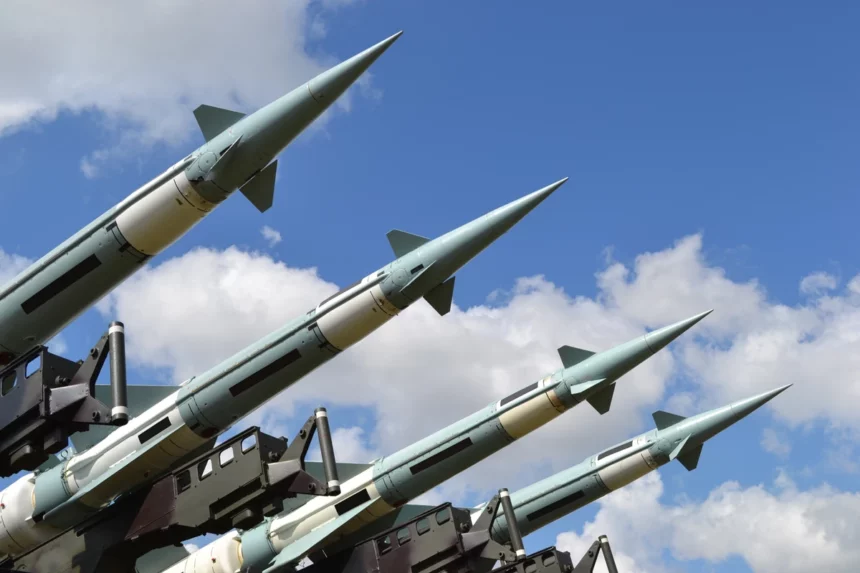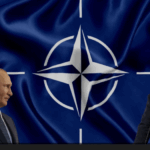Summary by Geopolist | Istanbul Center for Geopolitics:
Key Points:
-
Definitions and Goals:
- Nuclear Disarmament: Involves reducing the number of nuclear weapons and the role they play in national security policies. It aims for a step-by-step reduction of arsenals.
- Nuclear Abolition: Seeks the complete elimination of nuclear weapons globally, envisioning a world where these weapons no longer exist.
-
Policy and Practical Differences:
- Disarmament is often pursued through treaties and agreements that incrementally reduce stockpiles and establish verification measures.
- Abolition requires a fundamental shift in international security dynamics and the development of a new global security framework.
-
Challenges:
- Disarmament faces challenges such as compliance, verification, and the geopolitical interests of nuclear-armed states.
- Abolition is seen as utopian by some, as it requires unprecedented global cooperation and trust.
-
Strategic Implications:
- Disarmament can be a practical and immediate goal, building confidence and reducing risks.
- Abolition, while aspirational, provides a vision for a world free of the nuclear threat but faces significant obstacles in realization.
-
Critiques and Misunderstandings:
- The article critiques the tendency to treat disarmament as a stepping stone to abolition without recognizing the distinct nature and challenges of each.
- It highlights the need for a clear understanding of these terms to formulate realistic and effective policies.
In conclusion, while nuclear disarmament and abolition share the common aim of reducing nuclear risks, they represent different strategies and require distinct approaches. Understanding and differentiating between the two is crucial for effective policy-making and international security efforts.
Read more below.
The False Equivalency of Nuclear Disarmament and Nuclear Abolition
Over time, the boundaries between these very different approaches have become blurred. Even people within the nuclear community often use “nuclear disarmament” and “nuclear abolition” interchangeably. In some instances, arms control has also been lumped in with disarmament and abolition, because even it is deemed too radical for war hawks.
Nuclear abolitionists suffer disproportionately from this collapsing of categories. Nuclear abolition, in my view, is rooted in the traditions of slavery abolition. It is the most radical of the anti-nuclear paradigms, and the one most closely associated with other forms of abolitionist and social justice organizing.
When abolition is lumped in with the narrower—but still crucial—paradigms of arms control and disarmament, it loses some of its power to connect across movements and hinders efforts by activists like Ray Acheson and Emma Pike, and organizations like the International Campaign to Abolish Nuclear Weapons (ICAN), for example, to expand the reach of anti-nuclear weapons activism.
Clear distinctions between disarmament and abolition are needed to better define abolitionists’ work and to allow for more visionary organizing.
Beyond disarmament
A nuclear disarmament framework seeks to eliminate all types of nuclear weapons and to establish monitoring and verification safeguards to ensure no state is secretly trying to (re)build a nuclear arsenal. A nuclear abolition framework goes beyond the audacious but narrow goal of eliminating nuclear weapons; it strives to upend the systems of oppression that support and are supported by nuclear weapons.
Nuclear abolitionists understand nuclear weapons to be related to other oppressive systems—such as white supremacy, capitalism, and patriarchy—that reinforce each other at the expense of life on Earth, and that are all products of collective individual actions. Nuclear abolition calls for both self-transformation and the systemic transformation of society.
Abolition frameworks seek to address the roots of problems, not just the symptoms. The end of slavery, for example, happened because abolitionists fought tirelessly to show the world that a more equitable future was possible. The root of the problem was not just that enslaving people was bad, but that people did not value Black lives as humans, but rather as capital.
The mainstream nuclear disarmament movement was successful during the Cold War not just because the nuclear threat was so present in daily life but also because nuclear abolitionists worked diligently to connect nuclear weapons to race, colonialism, and other social justice issues to garner more widespread support for abolishing these weapons.
In the early years, the most vocal nuclear abolitionists were Black people who argued that nuclear weapons only served to bolster racist, patriarchal, and capitalist systems of oppression, and that the best way to achieve abolition was to amass people power by linking the struggles against those systems.
Leaders like Martin Luther King Jr., Coretta Scott King, Malcom X, Langston Hughes, W. E. B. Du Bois, Paul Robeson, and Erna P. Harris consistently discussed the intersections of nuclear weapons, racism, and colonialism, highlighting how these weapons bolstered white supremacist systems.
Some of these leaders pressed other social justice movements to take up the anti-nuclear banner: Coretta Scott King worked closely with several feminist groups. Paul Robeson worked with the labor movement. Harry Belafonte mobilized entertainers and artists.
However, these voices were effectively pushed to the edge or completely out of the peace movement, silenced not just by those in power but also by white activists. The Black freedom movement, which was garnering significant public support for linking antinuclear activism to civil rights and other prominent social justice movements at the time.
The movement came under attack from politicians, business leaders, and defense intellectuals who focused on equating nuclear disarmament and peace with communism from the late 1940s into the 1950s, and were supported by President Harry S. Truman.
The communist hunts that defined McCarthyism pressured Black activists to cut ties with the peace movement and focus solely on the domestic civil rights movement to avoid punishment from the government and ostracism from their communities.
Those who refused to succumb to the anti-communist crusades, like W. E. B. Du Bois, were targeted, slandered, and attacked. When Du Bois doubled down and led the campaign for the Stockholm Peace Initiative, he was indicted, arrested, and arraigned in US federal court for not registering as a foreign agent.
Du Bois was eventually acquitted on the spurious charges, but the US government continued to target him. His passport was revoked and then reinstated, at which point he moved to recently independent Ghana. When his passport expired, the US government refused to renew it, effectively stripping Du Bois of his American citizenship and forcing him to become a Ghanaian citizen until his death in 1963.
The impact of the anti-communist crusades lasted long after they ended. Many within the Black freedom movement preferred to exercise immense caution, cutting ties with the peace movement. Leadership at the NAACP fell into this camp, adopting a resolution in 1967 after Martin Luther King Jr. gave a scathing anti-war speech in which he labeled the United States as the “greatest purveyor of violence in the world today.”
The resolution, which came just five days after King’s speech, established that the NAACP did not believe African Americans should be involved in any peace activities: “any attempt to merge the Civil Rights Movement with the Peace Movement… is, in our judgment, a serious tactical mistake, that would serve the cause neither of civil rights nor peace.”
If outside pressure and hostility weren’t enough, Black activists trying to work within the peace movement often faced opposition from white activists who did not want Black people in leadership positions. It wasn’t until the historic 1982 disarmament rally in New York that Black activists and other people of color were able to exert enough pressure to demand representation in the coalition planning the rally.
Reviving the abolition paradigm
The targeted attacks and suppression of Black nuclear abolitionists during the Cold War greatly contributed to preventing the creation of a strong nuclear abolition movement. Instead, nuclear abolitionists were forced to fight for a seat at the disarmament table or abandon the fight altogether. Today, nuclear abolitionists face the same tough choices, with continued confusion about whether nuclear abolition is its own paradigm or merely a subset of disarmament.
There is good reason to believe that the nuclear abolition paradigm can thrive today and that allowing it to do so would be a boon to the struggle against nuclear weapons. Abolitionists’ intersectional approach makes them well-positioned to connect with wide swaths of the public, activating them to join the anti-nuclear cause.
Abolitionists can also credibly speak to social justice movements that understand how nuclear weapons fit into the systems of oppression they are fighting—and just need solidarity and expertise to be brought into the anti-nuclear struggle.
The nuclear disarmament movement was able to make progress during the Cold War in large part because people understood that the global stockpile of more than 70,000 nuclear weapons was wildly excessive, and that the risks far outweighed the benefits of the runaway nuclear arms race. The health impacts of nuclear tests had also grown too numerous to ignore.
Today, however, a disarmament framework does not go far enough to mobilize and sustain a mass anti-nuclear movement. Nuclear weapons are deeply entrenched in society, and people are distracted by other existential threats like climate change. It is damn near impossible to convince people to prioritize eliminating nuclear weapons without offering them a broader analysis of why the nuclear threat is so important.
The nuclear abolition movement enables organizers to highlight how the elimination of nuclear weapons can help dismantle other oppressive systems. A nuclear abolition framework doesn’t discount or eliminate all other work to curb or completely eradicate the nuclear threat, but it calls for formulating and promoting arms control and disarmament policies that seek to radically transform the world we live in—creating a world where community care and cooperation prevail over domination and violence.
A world where there are robust systems of accountability, healing, and transformative justice. A world where Indigenous and impacted communities lead efforts to build and maintain adaptive and sustainable systems that nourish the planet, rather than starving it.
One such effort was the campaign to extend and expand the Radiation Exposure Compensation Act. This statute, implemented in 1990, provided monetary compensation to a subset of people harmed by US nuclear testing. Although the program expired earlier this month, the fight to pass more robust legislation is far from over.
The campaign for more compensation and more opportunities for healing is an example of working toward transformative justice. What this effort requires from perpetrators—in this case, the US government—is acknowledgement of the harms done under the guise of national security, and material action to remediate those harms.
While the compensation program was limited in scope and funding, it was a concrete example of meaningful action to construct a more equitable, just, sustainable, caring, and abundant world.
An advocacy strategy rooted solely in eliminating nuclear weapons is bound to fail. Without broader systemic change, the anti-nuclear movement cannot effectively engage with the individuals and communities impacted by nuclear weapons—communities that are disproportionately Black, brown, and Indigenous—and the societal transformations these communities are seeking.
By: Jasmine Owens – a nuclear weapons abolitionist, writer, educator, and organizer. She has a master’s in Nonproliferation and Terrorism Studies from the Middlebury Institute of International Studies, and has worked for Win Without War, Physicians for Social Responsibility, Outrider Foundation, Council on Strategic Risks, Lawrence Livermore National Laboratory, the James Martin Center for Nonproliferation Studies, and ReThink Media. Her work and her world, starting with the abolition of nuclear weapons.
Source: Bulletin of the Atomic Scientists







